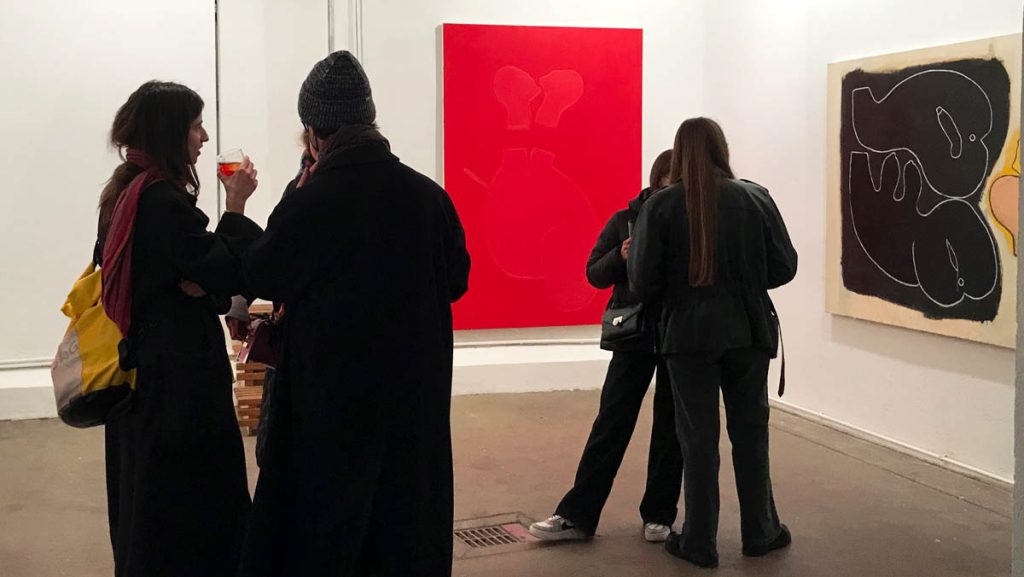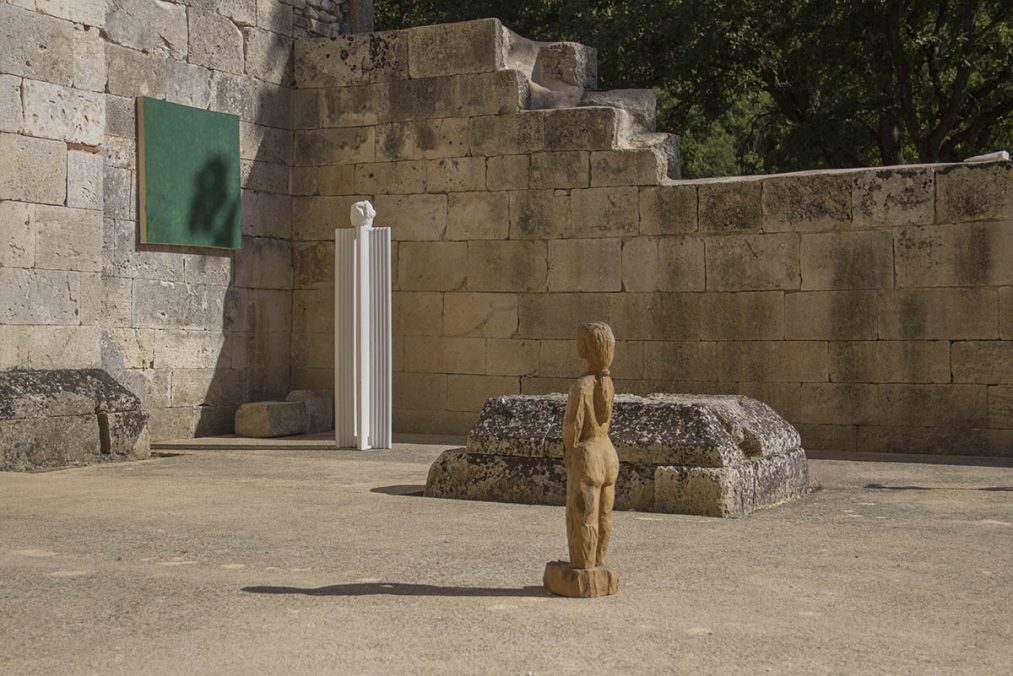
For each new exhibition, a renewed design and display of the space is created: a work in progress through the use and design of plinths, canvases and structures they have projected for the island. The island and the shows are only visible for the invited artists and contributors, while being secluded to outer’s gaze.
Can you tell us something about you and Enrico? Did you live in other places before deciding to base yourselves in Sardinia? Do you have in commons?
We do come from the town of Cagliari, south Sardinia, but our paths only crossed in 2012, when we both returned to live on the island coming from experiences abroad. Alessandro has studied and worked between Rome, Milan and Berlin, while Enrico was returning from the Netherlands, where he has been studying in Utrecht. Coming back from our studying abroad, we felt the need to live and work in Sardinia, and we had the chance to meet and talk about our individual works and researches, which are by the way extremely different in terms of media and areas of interest. We started thinking on how to gather our works together and after some months of research in 2013 we started location scouting for Occhio Riflesso. Since then we have always worked, exhibited and written through this frame created by our collaboration. We do not even specify anymore which works are done by who, or what is done four-hands, we have completely merged our practices into Montecristo Project. One more thing that we have in common is that we hate being photographed, so we prefer not to share photos of ourselves.
How came the idea of calling this curatorial duo Montecristo Project?
Well, it was quite a struggle to come out with “Montecristo Project” as a name for our ongoing collaboration. When we eventually decided to set up a space on a deserted island, which we wanted to keep mysterious and unreachable, it was easy to think of our beloved Edmond Dantès and his thrilling revenge in Dumas’s feuilleton. It must be said that our own was not that much a story of revenge but that of a treasure island, a hidden space which is alive and animated by the presence of the artworks displayed there. It is a subtle form of revenge though, to keep everything secluded, to deny the artwork status of objects, disposable and exhibited, thinking of it in terms of subjects.
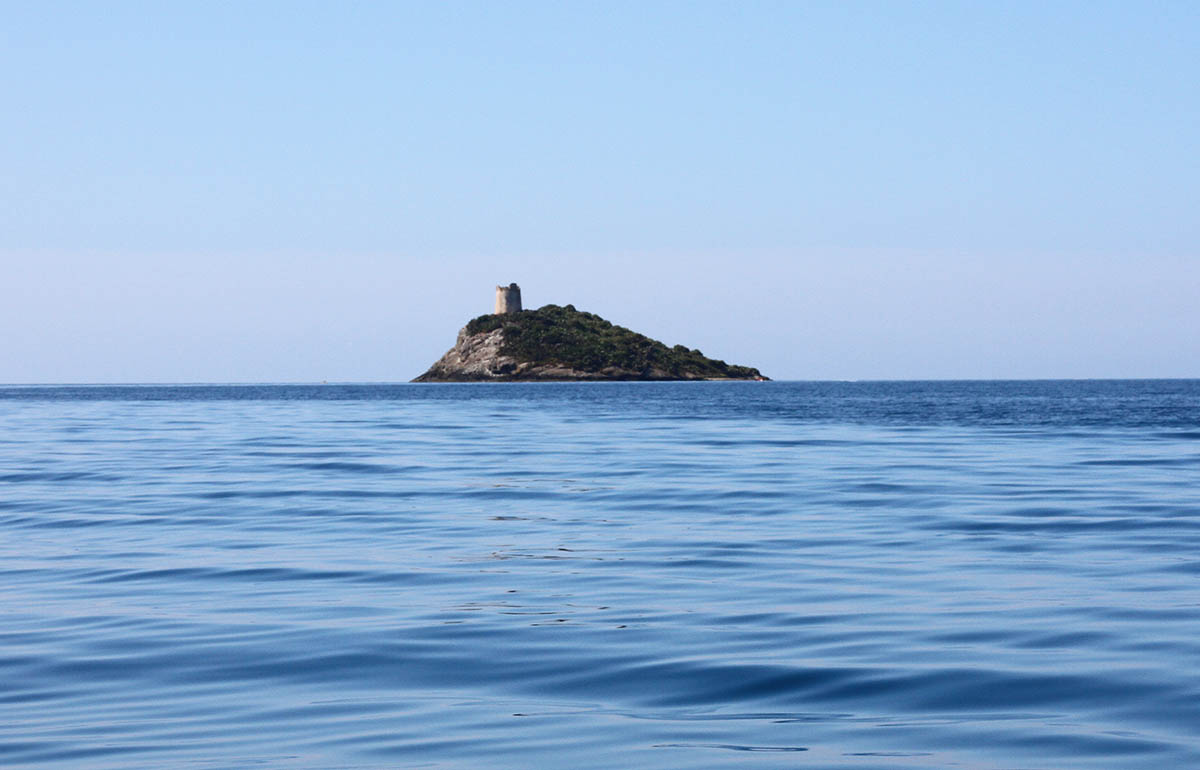
Before I go into more detail about Montecristo’s work, I would like to ask you if you can tell us something about Occhio Riflesso. What makes this project so special?
Occhio Riflesso was our first collaborative project, starting in 2013 and running until 2015. It was a series of six two-person exhibitions, the first in which we decided to work without an audience. We chose, indeed, to exhibit in remote, inaccessible spaces in Sardinian landscape: archaeological burial sites, artificial caves, a bunker, vernacular architectures such as a “pinnetto” and a villa in Orosei. We curated, exhibited, documented and wrote about the works, spreading it through its photographic documentation. In that case, differently from Montecristo, it was our own works on display, pieces inspired by Sardinia that we tried to amplify by documenting them in relation to the landscape itself. Before setting up each of the one-day exhibitions we scouted several locations on the island to choose the best possible place for each series of works we had to display: paintings, photographic prints, light projections, sand casting sculptures. Occhio Riflesso in its first phase is concluded, but it is the same approach we carried on with our current work, a rural utopia for ontologically selfsufficient artworks.
We thought of it as anti-duchampian approach: it was not the exhibition space to “legitimate” and label the works as art, but it was the art itself to legitimate a space, to make it sacred. Making it inaccessible was a way of transferring this sacrality, this magic happening.
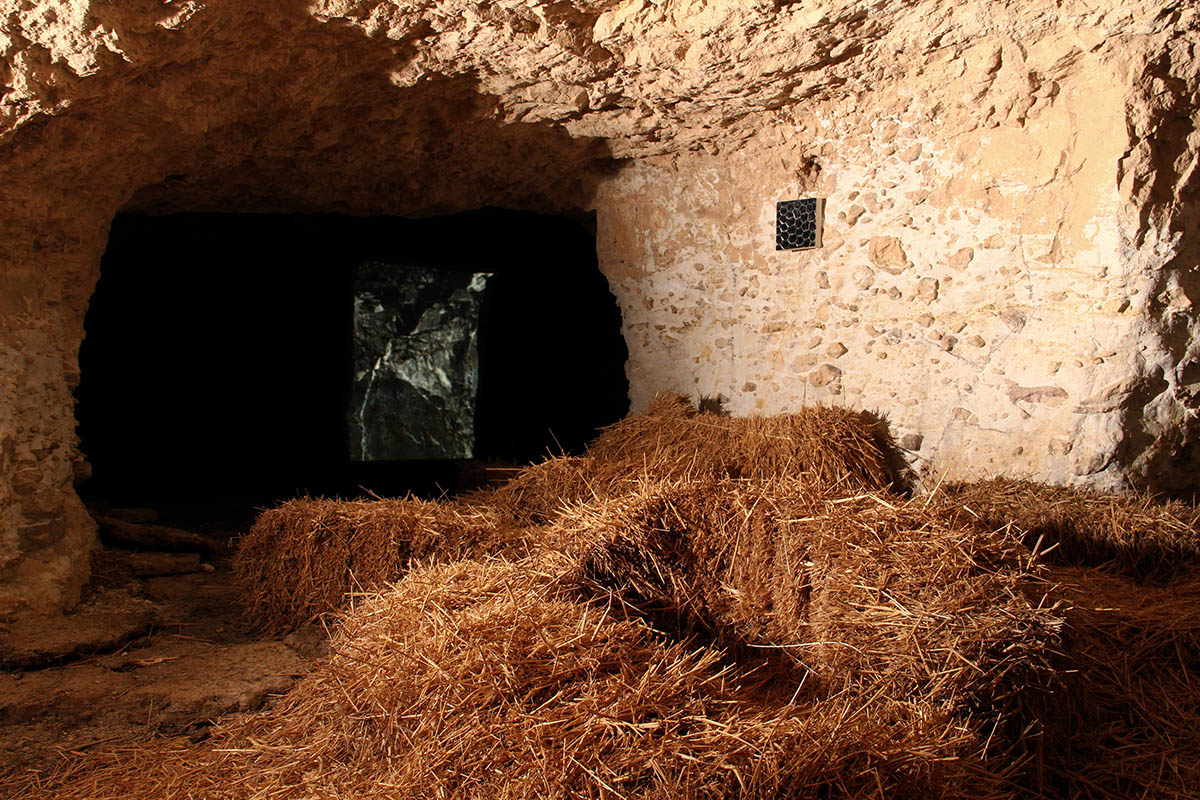
Enrico Piras-Alessandro Sau, Occhio Riflesso I, Grotta S’Iscuro- su, installation view 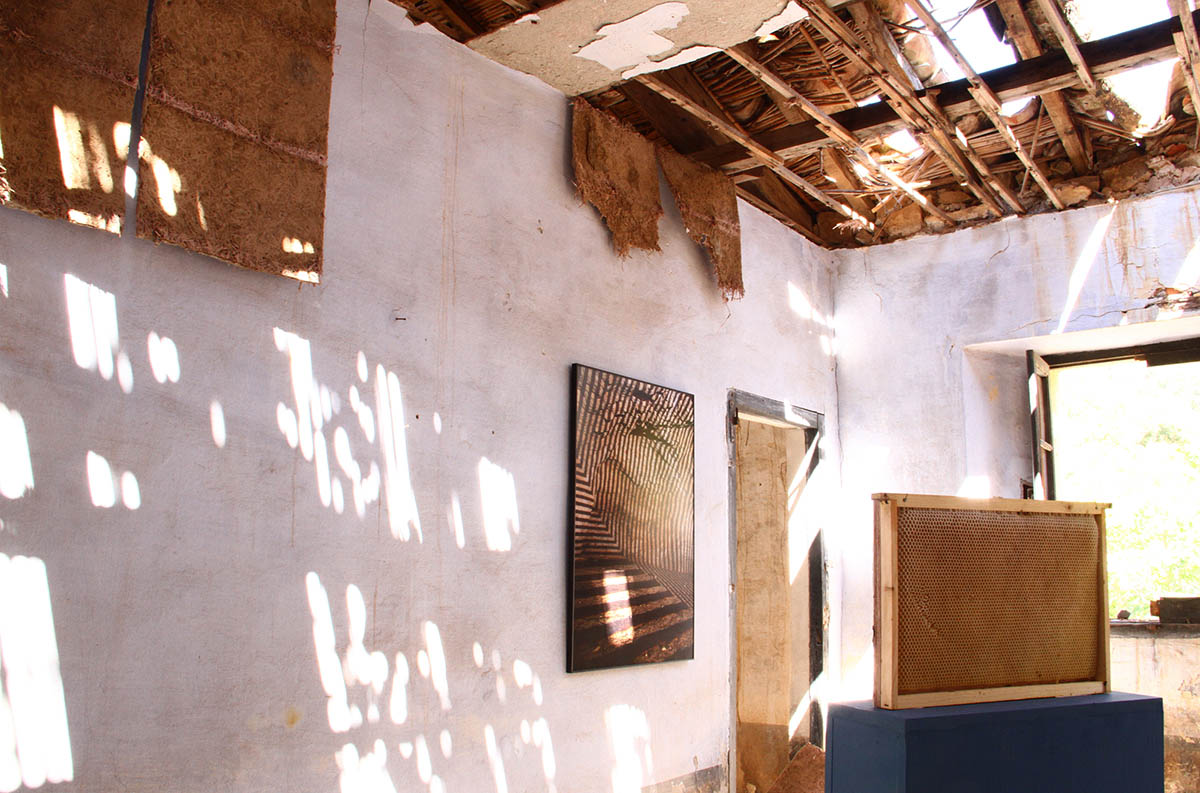
Enrico Piras-Alessandro Sau, Occhio Riflesso IV; Villaggio minerario di San Vito; installation view
What does it mean today to be a contemporary independent space?I began to think about this when I read that you, together with some other spaces in Italy, are part of a research project at Fondazione MAXXI in Rome.
We wish we knew, but with time we found out that we ain’t contemporary and we are not a space either, not as commonly intended. It is why we decided, around a year ago, to quit the MAXXI project after a few years of participation. We felt that it wasn’t the right place for our project to be in. Living and working in the island of Sardinia is not the choice to make if you want to be contemporary or cuttingedge or fresh in the fields of arts, in any field, actually. It is a place where time doesn’t count that much, stillness is stronger than movement and this is what makes this space special if you wish to be marginal to global movements. We said we are not a space because ours is an artistic project which camouflages itself as an art space, but what we do is just involve in our own research artists we appreciate and want to collaborate with. This sometimes takes the shape of a space, others that of extemporaneous experiences of display. That’s why we felt out of place in MAXXI’s recollection of art spaces which propose young artists, or artspace oriented dynamics.
Can you tell us something about the very first project of Montecristo?
Our first exhibition at Montecristo, taking place in a small deserted and secluded island near the Sardinian coast, was dedicated in 2016 to the work of Salvatore Moro (1933-2007). He was a so-called outsider artist, a spontaneous, naive sculptor and builder who created an amazing body of work in the small village of Oniferi, in central Sardinia. We decided to build for him (and for the following projects) a secluded exhibition space in a Spanish watchtower on a small island, renewing the part of the tower we intended to use to exhibit and creating a display that would be ideal for Moro’s sculptures.
Salvatore Moro, Ugo Ugo, Lorenza Boisi are only few of the artists that you have been dedicating exhibitions. Do they have in commons?
Yes they do, definitely. What they have in common is a human attitude which transfers into their work, meaning they are genuine, generous, deliberately naive artists and humans. Ugo and Boisi are both sophisticated, refined intellectuals which seek for a direct, spontaneous language to express themselves through painting and drawing. Ugo is also the man (he is 96 years old now) who created between 1967 and 1985 a precious collection of contemporary international artists for the town of Cagliari (where we live). Thanks to his relentless effort we have this jewel that, when correctly displayed and enacted, would be a stunning oeuvre. Salvatore Moro was a “outsider artist”, living in the small village of Oniferi in central Sardinia, producing amazingly brutal sculptures and architecture with no art training at all. He is the other side of Ugo and Boisi, he was not an intellectual, but a naive, spontaneous artist who sculpted and built out of necessity. This idea of art, expression as an interior need is what we seek into the artists we work with and we love. The opposite poles of sophisticated, avantgarde culture and that of popular, naive and spontaneous art can reach the same goal from different starting points.
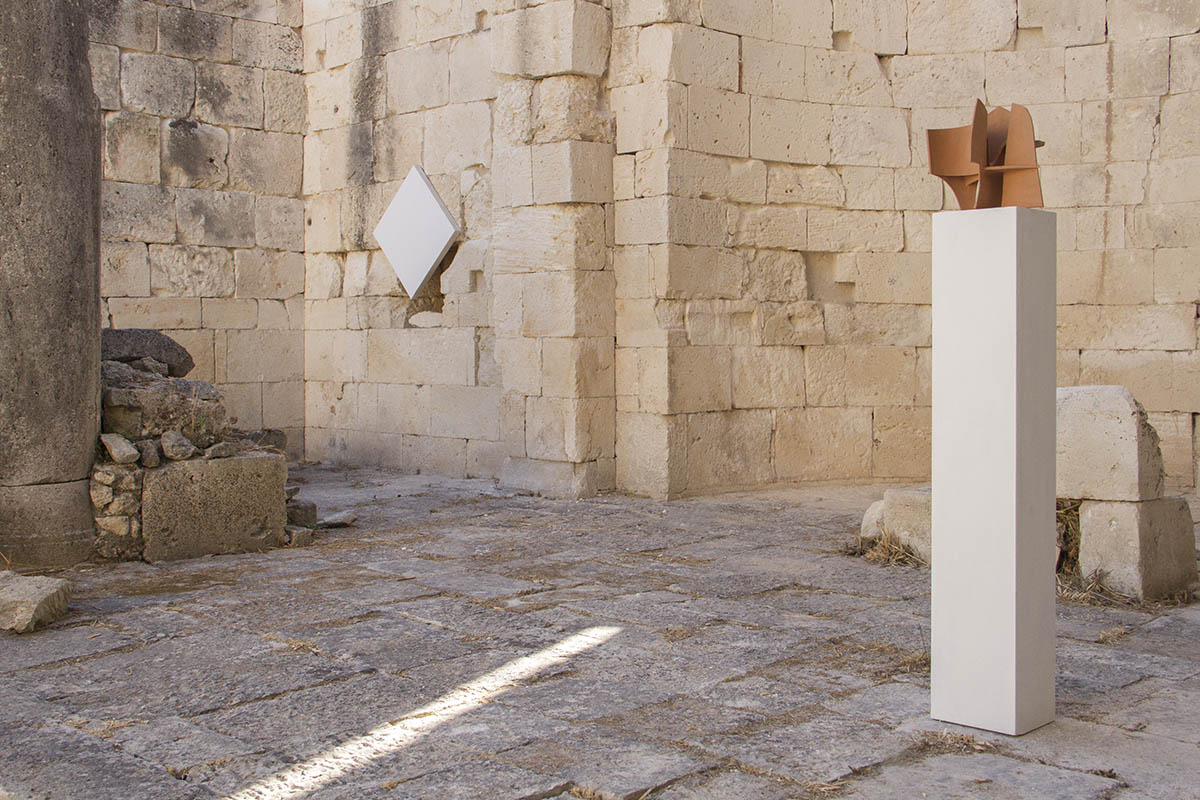
La Costante Resistenziale -A guide tour of Sardinian archaic, weird and marvellous stone sculpture – cred. Montecristo Project 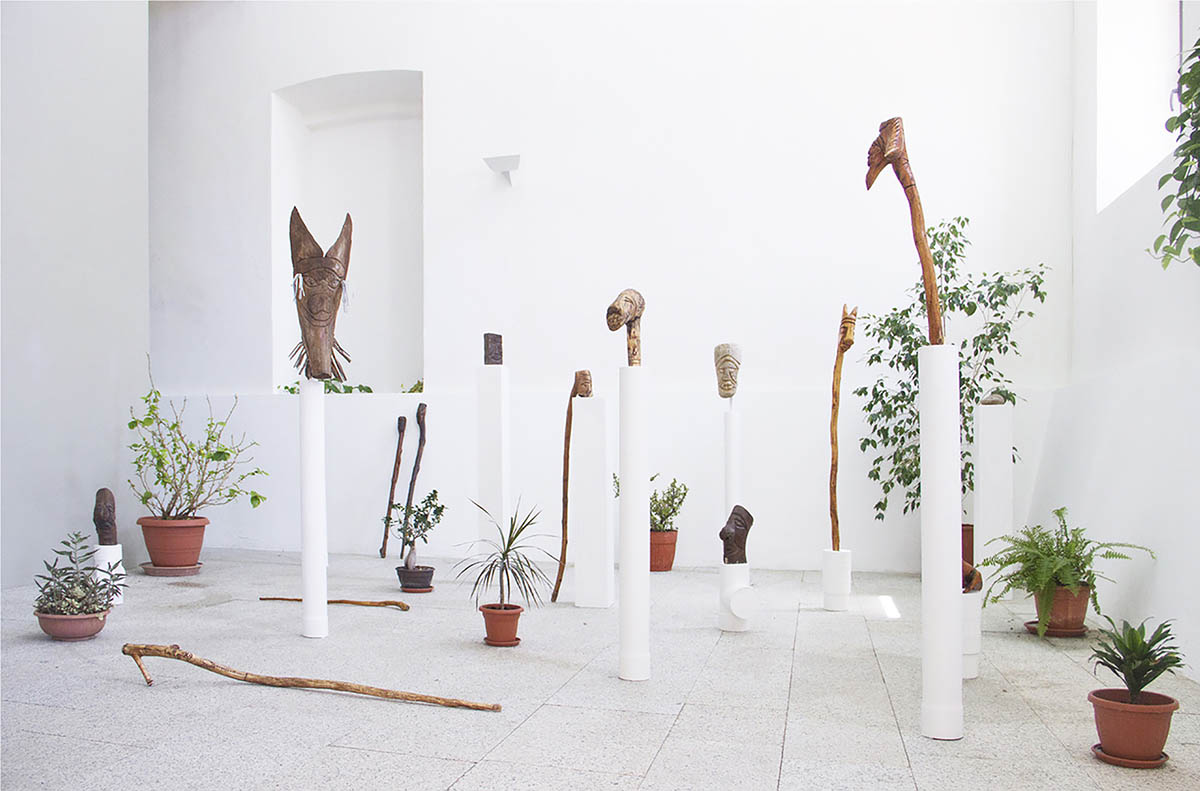
A guide tour of Sardinian archaic, weird and marvellous stone sculp- ture – Antonio Tiddia, cred. Montecristo Project
I refer here to a statement in your bio, „The island and the shows are only visible for the invited artists and contributors, but secluded to outer’s gaze, accessible only through its narrative and photographic filter.“ How can people, critics write reviews if they aren’t able to visit the exhibitions? What power has an exhibition documentation?
We believe that photographic documentation has a huge power and we consider it to be a self standing artistic field. Just think of how many weak shows, disappointing works (when seen in person) acquire an amazing aura when they are documented, thanks to the presence of the thing we tend to look at the most in these photographs: space. Installation shots (the way documentation of exhibitions is normally called) adds the dimension of the exhibition space to that of the artwork, somehow expanding it thanks to its installation qualities. We tried to use this by selecting peculiar locations that photographically amplify our own works (in Occhio Riflesso) and by building spaces for others with Montecristo Project. As for the reviews: it is something we really never considered. Sardinia is so remote that even if the shows were visible all year long there would be no reviews at all, so it really doesn’t matter – Unless you want to consider our local press, which is just something we don’t want to be reviewed by. Something beautiful happened last summer when Kiriakos Spirou published a review of our show in the ruins of a romanic church in Sardinia basing it on the documentation alone. It is a beautiful text and it shows that documentation, as a visual filter, is itself a possible work of art, reframing the sculptures and paintings we displayed in the amazing light of Sardinian summer.
What is important for you when curating?
Curating is a term we have used, in lack of a better one, but that we don’t appreciate. We feel that we do not curate, we are artists collaborating with other artists. So what we seek is what you look for when doing a painting, a sculpture, an installation: something you don’t really know what it is until you see it. On every project something special for us seems to happen, a sort of reward for the effort: it happened with Salvatore Moro and the appreciation the artist has gained after his first exhibition, with Tonino Casula and the sculptures of light we made to host his video works. First of all comes this research of doing something on a human basis rather than merely artistic in a professional way.
In the last years, I have closely followed how the pandemic has impacted the work of different galleries and spaces. I also wanted to ask you, how has your experience been?
It didn’t impact the visibility and possibilities of doing our work and research, but we felt uncomfortable doing it in such a time of struggle and pain for everyone.
So we decided to stop every project for one year, until last august where we exhibited in the ruins of a romanic church in north Sardinia.
Where are most ideas formed, and how does a day of yours look like on the island?
Ideas are mainly conceived on the phone and while working together in the studios, gardens we use as base camps for producing the works. And a lot while driving together to seek for places or just buying materials. The most common idea sharing between us happens by phone calls while taking our dogs out for the daily walk. Our days are very ordinary, as we have other works we depend on (our projects are self funded, so relying on non-art related incomes) and we meet for studio work or just dinner.
On what are you working on?
We are about to open a new space-department, a non nomadic exhibition space which will run in parallel to the projects we do outdoors. It will open with an exhibition of Luigi Mazzarelli, one of The greatest and less known artists from Sardinia. We hope to be able to open it next May/June.
Montecristo Project – montecristoproject.tumblr.com
About the Interviewer: Erka Shalari (*1988, Tirana) is a Vienna-based art author. She focuses on discovering independent young and emerging artists, unconventional exhibition spaces, and galleries that have deliberately broken new ground in their working methods. In this regard, she relies on unorthodox publishing practices, coupling these with a nonchalant manner of writing. The work oscillates between articles for magazines, exhibition texts and press releases.



